
Reverb & Spacial FX For Dance & Home Studio
Welcome to reverb information. Here we will attempt to offer some guidance & advice for beginners who may be confused by the new world of home & studio recording & dance music making.
To start with, these are the top-selling reverb & related multi-effect units last month at Thomann superstore, one of the largest retailers in Europe - This shortlist gives you some pointers as to what products are popular in this category at today's date.
Reverb is one of the most basic FX, It provides depth & a sense of space to your tracks. The basic reverb unit, comes in three types of processing format:
- DIGITAL Reverb (inc' s/w reverbs)
- PLATE Reverb
- SPRING Reverb
Each of these types offers its own sound. Most people will have a Digital Reverb Unit, but don't turn your nose up at a cheap s/h Spring Unit , cos it's got a distinctive sound like they used on the old dub plates. You're unlikely to get a s/h plate, even if you had the space for it.
The Digital Reverb Unit can have up to an enormous mass of editable parameters. Here are some of the more common ones:
- INPUT..... Sets the level in to the unit to avoid distortion and get a high enuff level.
- REVERB PATTERN..... Selects between different preset programmes which may then be editable.
- PRE-DELAY LEVEL..... Adjusts delay level at the start of the signal before the reverb.
- PRE-DELAY TIME..... Adjusts the pre-delay echo time.
- DIFFUSION RATE..... Adjusts the time it takes for the reverb to disperse.
- EQ..... Often reverb units will offer eq functions to tailor the sound.
- DENSITY..... On some units you can adjust the "thickness" of the repeats or taps ( the tiny delays from the original signal).
- OUTPUT..... Sets the level of the signal out
There are two types of digital reverb. Those with fixed preset patterns, and those with masses of editable parameters. I prefer a cheap basic one, as long as it's quiet, (which rules out the Quadraverb ha ha ha !!)
There is also the humble, cheap & nasty Spring Reverb which nobody wants right now, but it can make some cool sounds... and the plate reverb, which there's very little chance of you owning (read the section). I would start a system with a decent cheap reverb like the Microverb, which is well good enuff, and if you come across a spring unit, give it a shot.
IMPORTANT: Always have a dedicated stand-alone Reverb. This enables you to use the Reverb FX on individual instruments in the mix.
Check out the different types, & what they can do for you.........
DIGITAL REVERB UNITZ
Digital Reverb has now reached the stage, where you can get an 18 bit unit like the Alesis Nanoverb for 160 quid new, or an Alesis Microverb 1 for about 60 quid secondhand. So it's easy to get good quality reverb in your sound.I would have to say, that I would only buy an expensive Reverb Unit as a last resort if there was nothing else I could possibly buy. I've got about 20K of studio kit at what I paid for it, and I still use an Alesis Microverb 1 unit.
It's easy to read the mag's and all the manufacturers are tellin' you about their latest must-have unit... but cheap units are fine, and for dance tracks, it's more important to have a seperate Reverb & Delay Unit, than to have an all in one Multi FX Unit... Believe me, an expensive Reverb Unit is not goin to make your tracks sound better, but having seperate Reverb, Delay and maybe a compressor will. Just follow the tips!
The most important thing that people fuck up on with Reverb, is they use too much... When you're doin the mix, it's easy to have a bit of Reverb on everything, then you add more Reverb to a sound, to put it further into the mix, when perhaps you should REMOVE some Reverb from the OTHER sounds to get the same effect. (Same thing goes for eq as well).
The end result is a washy, messy mix, with no definition, so be careful cos it's the classic mixing mistake.
There's not alot more you can say....so check out the budget units, go to check out Spring or Plate Reverbs, or go to the FX & Tricks, to see what you can do to get some wacky wicked sounds with Reverb & H/Disk!
SPRING REVERB UNITZ
Nobody loves the old Spring units any more, so you can get one for 20 - 60 quid. They have a sound all of their own, not to good as a general Reverb for smooth sounds, but on drums, they give the old 70's dub plate "splash" on the snare drum. Adding this unit considering it's so cheap, can add some veriety to your tracks.... It's a must-have, if you're into dub sounds.The Spring Reverb, is given it's name cos it actually uses springs inside a case of some type or other. They are usually found in cheaper or old guitar amps & combo's. In the case of the famous "Great British Spring", the case was literaly a piece of grey water pipe like you get in household drainage systems. If you aint seen one, you didn't spend any time in cheap 8 track studios in the early 80's.
The audio signal is sent through the springs, which are stretched loosely across the case. The minute vibrations caused by the current passing through the springs, are added to the signal, and it gives a kind of hollow nasty reverb effect.
Of course, you can get bigger vibrations, like if someone kicks the unit, this gives a big wobbling "splash" sound. This same effect is caused when you send percussive sounds like drums through the unit. In the old days, when people wanted the reverb to be smooth, drums were the big letdown with a Spring unit. You couldn't get alot of reverb on the drum sounds without them causing the units springs to wobble..... However, this is exactly what gives it the classic old dub sound, which is impossible to get authentically, even with super-duper expensive digital units.
PLATE REVERB UNITZ
Plate Reverb, is a bit of a rarity nowadays, some studios still have them, cos a good one which might have cost 5 or 6000 pounds, will still have a super-smooth sound that some people swear by. Also the studio might have paid 1000's for the unit, and it wouln't be worth selling it, cos they'd probably get peanuts for it.Some Digital Reverbs have presets called "Plate", which try to catch the plate sound, which is smooth and even, slightly metallic, with a uniform decay and no sparkle.
Plate Reverb gets its name, because the unit (which may be about 6 ft wide and 4 or 5 ft high, utilises thin steel plates suspended in a frame. The signal goes into the unit and passes through the plates causing them to vibrate. The vibration signals are mixed with the original which produces loads of minute delays with different decay rates. Because the plates are quite large, you get a reasonable decay time, which can achieve some deep reverb effects. Also, the plates because of their physical size, could stand to have percussive sounds like drums thrown at it. Before affordable Digital Reverb, it was the only way to get realistic artificial reverb on to a kit.
Trouble with these units is that they needed a seperate isolation room to keep them in so they wouldn't pick up vibrations, and also because they were so fuckin' big & heavy, they just got in the way.
You wont get to buy one of these unless you're insane, but they're interesting units.
Ok.... Lets take a look at a few tricks etc!...
REVERB TIPS & TRIX
Most of these tips relate to things you can do with a midi & H/Disk system. Some will apply to Tape & midi as well........But hey.....! that's the way it goes.MAKE YOUR OWN GATED & WIERDO REVERBS
Fairly common one this, you probably know it, but if y'don't, and you've got a stereo noise gate, here goes.- Send the desired sound from the mixer, via an auxilliary send (echo/fx send) to the Reverb Unit.
- Bring the L & R outs from the Reverb Unit into the L & R inputs on a stereo noise gate.
- Set the Reverb to a large reverb setting, like a hall or something.
- Set the gates to Stereo Mode, and set a low Threshold, and a fast Attack.
- Next set a short decay time on the gates, and send the reverb through.....
- You should get a massive reverb sound, which by adjusting how long the gates stay open for, cuts out quickly
- You can now wierd up the sound, by changing the Attack Time on the gates
The beauty of doing it yourself, is that you can get just the correct amount of open/hold time on the gate, to obtain the custom sound you're after, and to rhythmically fit the song......Most cheaper Reverb Units if they have Gated Reverb, fix the decay time, which can clash rhythmically with the song.
Once you've set up the effect, say on a synth pattern, you can run the sequencer, and record the Reverb effect with the synth onto H/Disk (or Tape). You can then arrange the effected synth patterns into the song with copy/drag 'n' drop, and then reset the reverb for general use in the final mix....
MAKE YOUR OWN RHYTHMIC REVERBS
Another wierd variation can be had by setting the gates to Fixed Stereo mode, AND... Trigger Input mode, and then while having the Reverb go through them, trigger the gates open and closed rhythmically with something like a hi-hat pattern.All you have to do, is send some hi-hat to the Trigger Input Socket on the gates from either an Aux Send, or with an insert cable plugged into the hi-hat- channel insert socket.
This gives you wierd rhythmic reverb coming off a sound. Once again, you can record the effect into H/D, and arrange the patterns into your song, then reset the reverb for general use.
MAKE YOUR OWN REVERSED REVERBS
Ok... Unlike Digital 'Reversed Reverb' patches, this actually DOES create a reverb that comes in BEFORE the real sound appears!...Ok first for a H/Disk system...
- First choose a reverb with a fairly long decay.
- Next apply some to your vocal or a synth or snare drum or something.
- Play the song, and route the reverb only into the soundcard, and record only the reverb.
- Line up the reverb with the vocal or whatever, and then do a reverse audio command.
- You will now have a reversed reverb part, that you can drag around in relation to the original sound until you get a cool effect.
- Unlike with FX units that have a Reverse Reverb patch, this one really does play BEFORE the original sound.
OK... Now the same for tape machines.......
Carry out steps 1 & 2, but before you record the reverb, turn the spool of tape over, so it's playing backwards.
Next, locate a free track (be careful here, cos your tracks will be back to front.....that is, what was track 1, will be track 8 on an 8 track machine.)....
Play the vocal (backwards) through the reverb, and record the reverb only, onto a free track.
Put the tape back the right way round, and.......Woah !!!.....This FX sounds wicked on a vocal. Try also keeping the tape the right way round, and recording some reverb onto a track at high speed, then play back at low speed.....Hmmmmm.....Not bad !!
MAKE SOME TIME OFFSET REVERB
With H/Disk, you can record a reverb from say a synth or vocal onto a H/D track, and then drag it around to offset it in time from the original... Hey, why stop there... You can copy the reverb over to an adjacent track, then offset them from the original sound each by a different amount... when youve got it right, mix the two soundfiles together. You can get single, double, triple or whatever ammounts of offset reverb!GHOSTLY VOCAL REVERB
If you get an old Spring Reverb, you can rip off the case cover, and bawl and shout into the springs... You wont hear the result while you're doin' it probably, but if you record it into your H/Disk, or to tape, it can make some wierd atmospheric noises.You can also try running different objects up and down the springs and recording that.
Also just tapping or banging the unit, makes some wierd noises, especially if you put that sound through your normal Digital Reverb, to give it depth and distance.
Effects like these, will create more interesting sounds in your chewns than buying a massive top end synth... If you start to think along these lines, you will find all sorts of creative shit you can do to give your tracks that distinctive sound edge.
Add your reverb comments
or nominate an unlisted reverb unit here!
For listed reverb units, please leave your comments or review on the actual effect-unit item page - You can browse all effects & processors in the GEAR section - if you have an actual question, try asking on the forums.
Reverb section comments
Name: Bastiaan
Email: Hajee@dds.nl
Activity: part-timer
Date: 18-Mar-01
This is something I like on (some) drums:
Use a gate on the complet track that chops of the tails of hats and basedrums et. (for a very very choppy, tight sounding drums) the sound should be remeniscent of some of those 2 step and house records....use the eq on your desk to remove ALL high frequencies.
A copy of the track you should compress with a medium attack and slow release (so you get only the initial plops and klicks of the sounds, the attacks) Remove all LOW frequencies on your deck and send into a big reverb (if you can only attentuatie the hi frequencies with your reverv unit)
With the med eq you can now adjust the track to tast (let the hi-verb kick in and out at will etc.) play with the vloume slider (up and down, rythmically etc..) and resample at will.
Bastiaan
| Article rating out of 5: |
Section 'ratings' were added 2012 - some section comments have no viewer rating
Name: Bip
Email: b1pb0p@hotmail.com
Activity: Hobby-ist
Date: 25-Oct-01
To make a reverse reverb on a HD system, follow the tape instructions and reverse the audio first, then do the reverb, then reverse the audio and reverb so they're forwards again. Works for making reverse echo, too. If you follow the instructions here you'll just get a reverb playing your song backwards.
| Article rating out of 5: |
Section 'ratings' were added 2012 - some section comments have no viewer rating
Name: Don L
Email: donkendra @juno.com
Website:
none
Activity: Hobby-ist
Date: 30-Jan-04
I heard somewhere that you could make an effective delay on vocals by sending the vocal through a reel to reel tape recorder first. Does anyone have any knowledge how to accomplish this?
| Article rating out of 5: |
Section 'ratings' were added 2012 - some section comments have no viewer rating
Name: antony
Email: tonysm@yebo.co.za
Activity: part-timer
Date: 26-Feb-04
How does the reverb sine wave combine with the guitar or vocal wave? is this done digitally or can it be recorded directly with the vocal recording?
| Article rating out of 5: |
Section 'ratings' were added 2012 - some section comments have no viewer rating
Name: Asher
Email: asherlion_1@hotmail.com
Activity: Hobby-ist
Date: 01-Jul-04
how do i ensure that i get a processor which will give me sufficient control over the effects(on a sparing budget)? (i.e. realtime, simultaneously and highly variable delay, decay, pitch and depth control)... and what specifications will i be needing to look out for? examples welcomed.
Thanks
| Article rating out of 5: |
Section 'ratings' were added 2012 - some section comments have no viewer rating
Name: Pete Bulley
Email: pete.bulley@bbc.co.uk
Activity: Professional
Date: 16-Dec-05
Actually, the EMT 250 is a digital reverb.
It's stuffed full of TTL logic chips.
| Article rating out of 5: |
Section 'ratings' were added 2012 - some section comments have no viewer rating
Last added comment
Name: hany
Email: elmariatchi2000@yahoo.com
Activity: Professional
Date: 28-Jul-07
i wanna know how to record the reverb i have tc electronic m350 and rme sound card can sombody help me wih details....thanx alot
| Article rating out of 5: |
Section 'ratings' were added 2012 - some section comments have no viewer rating
Effect unit &
Processor
Classics
Here's a selection of classic effects units & processors
Alesis Microverb 1
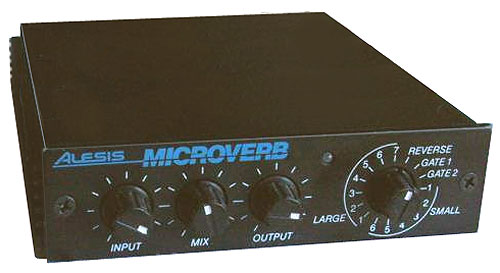
The great Micro-verb... a whole lotta reverb for peanuts money... ...
Roland RE-201
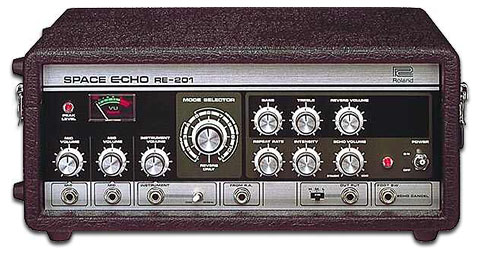
The classic Roland Space Echo...
Drawmer LX20

The Drawmer LX20 soft-knee stereo compressor is one of the first budget comp's you can look at getting. Hundreds of thousands of budget (& bigger) studio's have an LX20 in the rack so check one out. ...
Roland SRV-2000

The great Roland SRV-2000 Rolands first dig' reverb, a great cheap s/h classic for that retro 80's reverb sound. ...
Alesis 3630

Named after Alesis's street address at the time, the Alesis 3630 lays claim to be the most popular compressor of all time. The Alesis 3060 is a versatile unit offering stereo or two mono compressor...
EMT 250

EMT reverb, the 250, a monster classic!... check it out. ...
Urei LA3A
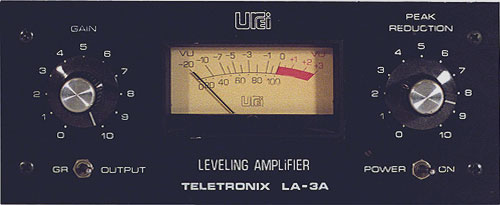
LA3A is a classic vintage compressor from Urei. ...
Yamaha SPX90

The famous yamaha SPX90 MK1, the multi-fx unit that launched a thousand multi-fx units. A total classic still used today.. loads of fx, delays, gating & compression etc with an excellent useful reverb...
Drawmer DL 241

DRAWMER DL 241 Dual auto-Compressor Gate ...
Drawmer DS201

The original frequency concious gate from Drawmer....
DBX 160
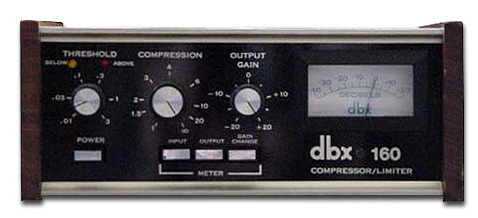
the classic dbx 160 ...
Teletronix LA2A
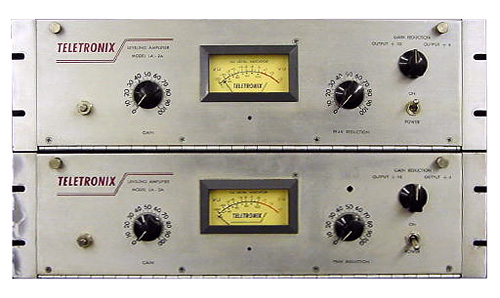
the classic LA2A originaly from Teletronix. (re-issue by UA) ...
AMS RMX16

Classic AMS reverb ...
EMT 140
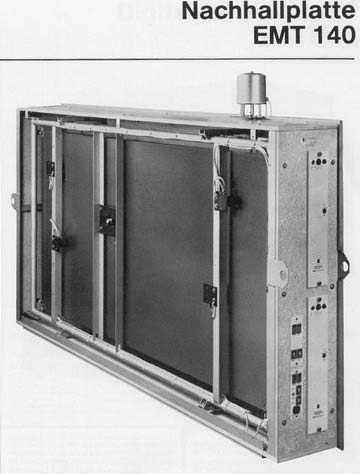
EMT plate reverb. ...
Urei 1176

Classic old skool compressor. ...
dancetech
&
thomann
partner store
Help support the site & the users music space - Buy via our partner store for EU customers. One fixed price delivery for most items!
HOT DEALS this month at Thomann!
behringer - fx2000 3d fx processor
€ 119.00 - £106.56
behringer - mdx2600 v2
€ 115.00 - £102.98
dbx - 166 xs
€ 144.00 - £128.95
dbx - 166 xs
€ 144.00 - £128.95
dbx - 215s
€ 117.00 - £104.77
dbx - driverack pa2
€ 398.00 - £356.42

fmr audio - rnc 1773
€ 211.00 - £188.95
klark teknik - 76-kt
€ 222.00 - £198.81
lexicon - pcm96 surround d
€ 3,699.00 - £3,312.60

roland - vt-4
€ 211.00 - £188.95

roland - vt-4
€ 211.00 - £188.95
ssl - fusion
€ 1,999.00 - £1,790.18
tascam - ta-1vp
€ 348.00 - £311.64
tc electronic - m100
€ 89.00 - £79.70
tc electronic - m100
€ 89.00 - £79.70
tc electronic - m350
€ 169.00 - £151.34
tc electronic - m350 b-stock
€ 156.00 - £139.70

tc-helicon - voicetone r1
€ 89.00 - £79.70

tc-helicon - voicetone t1
€ 89.00 - £79.70
the t.racks - achat dsp 24
€ 222.00 - £198.81
the t.racks - dl 2/918 delay line controller
€ 144.00 - £128.95
the t.racks - ds 2/4
€ 173.00 - £154.92
the t.racks - ds 2/4
€ 173.00 - £154.92
the t.racks - dsp 204
€ 215.00 - £192.54
the t.racks - dsp 206
€ 249.00 - £222.98
the t.racks - dsp 408
€ 479.00 - £428.96

the t.racks - dsp 4x4 mini
€ 77.00 - £68.95
the t.racks - fir dsp 408
€ 577.00 - £516.72
